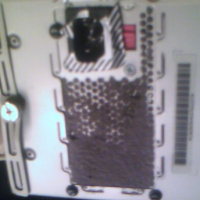Raid 0 and/or?

I want to set up RAID 0 or something better on my Windows 10 machine. It's a hand-me-down, my stepson discarded it and it's about 4 years old. I want to use it to store scanned family photos (and more) without the hassle of online accounts and connectivity issues. In January I installed Windows 10 Pro on a new 1 TB Seagate drive. The 4 year old 1 TB drive is still in the case but it probably isn't a Seagate. Where I work we have some RAID 0 machines that always use identical drives.
Will I find RAID 0 in Windows 10 Pro and what do I have do to use it?
As I understand it, RAID 0 just makes an exact copy of the hard drive. When the main drive fails the spare is an exact copy so the machine runs until the failed drive can be replaced. The 1 TB Seagate was $45, I can buy a twin for it.
Comments
-
I found something on Microsoft's website for Windows 10. I am not rolling, I just followed advice to ask somebody who knows. I would still like to hear from somebody with experience on this. Here's what I found (excerpts, I didn't copy the whole thing, but it all came from Microsoft):
https://support.microsoft.com/en-us/help/12438
Storage Spaces in Windows 10
Applies to: Windows 10
Storage Spaces helps protect your data from drive failures and extend storage over time as you add drives to your PC. You can use Storage Spaces to group two or more drives together in a storage pool and then use capacity from that pool to create virtual drives called storage spaces. These storage spaces typically store two copies of your data so if one of your drives fails, you still have an intact copy of your data. If you run low on capacity, just add more drives to the storage pool.
…
You can use a variety of types of drives with Storage Spaces, including USB, SATA, and SAS drives.
...
How do I create a storage space?
Add or connect the drives that you want to group together with Storage Spaces.
Go to the taskbar, type Storage Spaces in the search box, and select Storage Spaces from the list of search results.
Select Create a new pool and storage space.
Select the drives you want to add to the new storage space, and then select Create pool.
Give the drive a name and letter, and then choose a layout. Two-way mirror, Three-way mirror, and Parity can help protect the files in the storage space from drive failure.
Enter the maximum size the storage space can reach, and then select Create storage space.
…
Should I create a simple, mirror, or parity space?
Simple spaces are designed for increased performance, but don't protect your files from drive failure. They're best for temporary data (such as video rendering files), image editor scratch files, and intermediary compiler object files. Simple spaces require at least two drives to be useful.
Mirror spaces are designed for increased performance and protect your files from drive failure by keeping multiple copies. Two-way mirror spaces make two copies of your files and can tolerate one drive failure, while three-way mirror spaces can tolerate two drive failures. ... When a mirror space is formatted with the Resilient File System (ReFS), Windows will automatically maintain your data integrity, which makes your files even more resilient to drive failure. Two-way mirror spaces require at least two drives...
...Parity spaces are designed for storage efficiency and protect your files from drive failure by keeping multiple copies. Parity spaces are best for archival data and streaming media, like music and videos. This storage layout requires at least three drives to protect you from a single drive failure and at least seven drives to protect you from two drive failures.
-
Welcome to the forum Jim! To answer your original question, RAID is indeed an option available to use with Windows 10 and can be configured in three different ways. The first is through the Storage Spaces feature that you mentioned earlier, the second involves a software RAID using Disk Management, and the third is a hardware RAID using your motherboard's RAID controller or a third party PCIe RAID controller.
Before you create a RAID array, it's important to understand the different types of RAID in order to determine which will better serve your needs. In our 3990X guide, we used RAID 0 because it offered the highest level of IO performance, however it does not protect against drive failure. RAID 0 is a "striped" configuration that leverages writes across multiple drives to improve your storage performance, effectively doubling bandwidth in some cases. RAID 1 is the more traditional RAID, where you mirror your drives to have redundancy in the event of a drive failure. Since you are scanning and storing important family photos, I would strongly recommend going this option. If you need added redundancy, you can even go with a RAID 5 or RAID 6 configuration, which provides even more redundancy for multiple drive failures.
For more information on RAID levels, take a look here: https://www.microcenter.com/tech_center/article/4499/raid-by-the-numbers
As for mixing and matching drives, I strongly recommend you match them. Different drives have different controllers, and it's a lot easier to rebuild a RAID array if you use identical drives, especially if you are using a hardware RAID. It's possible to use different drives, but it's a bit more tedious to deal with overall and may not perform as well as using identical drives.
Here are some articles describing the many ways of setting up RAID.
1: Disk Management: https://www.windowscentral.com/how-set-mirrored-volume-file-redundancy-windows-10
2: Storage Spaces: https://www.howtogeek.com/109380/how-to-use-windows-8s-storage-spaces-to-mirror-combine-drives/
3: Hardware RAID (Intel): https://www.intel.com/content/www/us/en/support/articles/000005803/technologies.html
4. Hardware RAID (AMD): https://drivers.amd.com/relnotes/amd-raid-quick-start-guide.pdf
Understand that if you are trying to mirror the OS drive (the local C disk), you will need to backup your data and reformat. If you are simply adding additional disks to a system, you can RAID those additional disks from within the OS without having to reinstall. This would be recommended, as you can use a faster SSD as your boot device and use spinning HDD's with redundancy for your important files. If you have any questions Jim, please let us know! -
I bought 2 more 1 TB Seagate drives and set up a storage space using those 2 new drives. I thought the motherboard had only 3 SATA ports so I stuck with 3 drives but each one was a double port (they need straight connectors on the cable to use 2 because they are stacked ).
I didn't expect that the storage needs unformatted drives to work. I didn't format them so I was ok. I set them up as mirror drives so both 1 TB drives act as less than 1 TB drive D.
I am not using much so far and I have 3 SATA ports left. Once they were set up I cut and pasted my documents & picutures into the D storage space. I think I'm covered now. -
It sure sounds like it! Glad to hear everything went smoothly and that you have this safety net in place for your data. If you have any questions, please let us know.Jim said:I bought 2 more 1 TB Seagate drives and set up a storage space using those 2 new drives. I thought the motherboard had only 3 SATA ports so I stuck with 3 drives but each one was a double port (they need straight connectors on the cable to use 2 because they are stacked ).
I didn't expect that the storage needs unformatted drives to work. I didn't format them so I was ok. I set them up as mirror drives so both 1 TB drives act as less than 1 TB drive D.
I am not using much so far and I have 3 SATA ports left. Once they were set up I cut and pasted my documents & picutures into the D storage space. I think I'm covered now.
Categories
- All Categories
- 1 The Blog
- 1 What's Trending
- 7.9K The Community
- 3.2K General Discussion
- 136 New Members
- 856 Consumer Tech
- 227 Prebuilt PCs and Laptops
- 165 Software
- 32 Audio/Visual
- 53 Networking & Security
- 4 Home Automation
- 5 Digital Photography
- 14 Content Creators
- 30 Hobby Boards & Projects
- 83 3D Printing
- 83 Retro Arcade/Gaming
- 61 All Other Tech
- 397 PowerSpec
- 2.6K Store Information and Policy
- 149 Off Topic
- 58 Community Ideas & Feedback
- 614 Your Completed Builds
- 4K Build-Your-Own PC
- 2.9K Help Choosing Parts
- 327 Graphics Cards
- 335 CPUs, Memory, and Motherboards
- 146 Cases and Power Supplies
- 54 Air and Liquid Cooling
- 48 Monitors and Displays
- 93 Peripherals
- 66 All Other Parts
- 65 Featured Categories
We love seeing what our customers build
Submit photos and a description of your PC to our build showcase
Submit NowLooking for a little inspiration?
See other custom PC builds and get some ideas for what can be done
View Build ShowcaseSAME DAY CUSTOM BUILD SERVICE
If You Can Dream it, We Can Build it.

Services starting at $149.99

